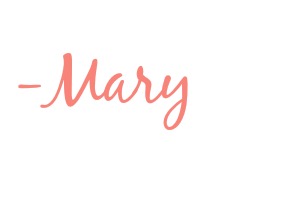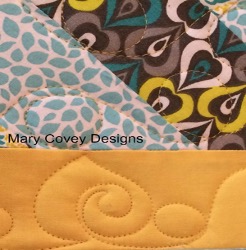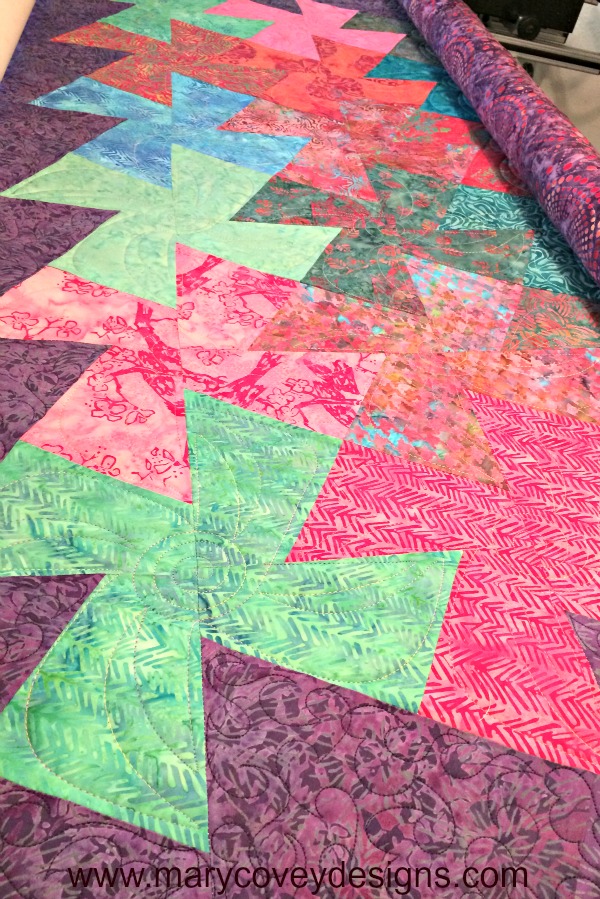Quilting the Quilt
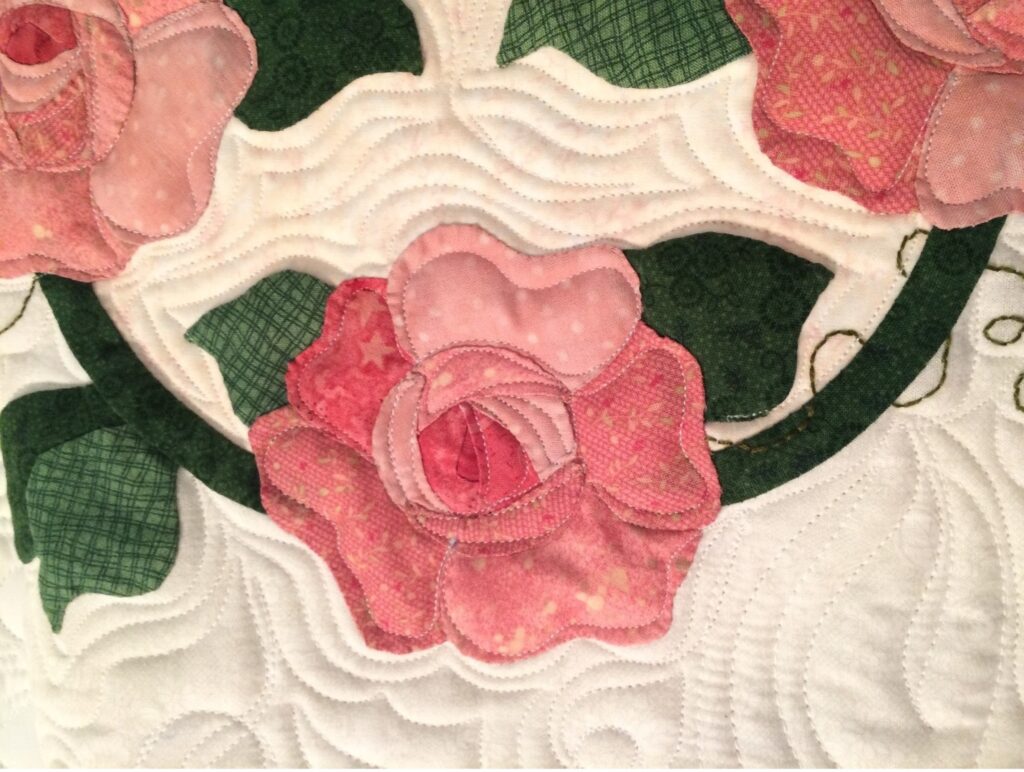
When planning a quilt, most quilters know there are three elements to keep in mind – design, color, and texture. There is no denying that we are drawn to a quilt by the beauty of the design and by the color combinations that dazzle. But what about the texture – the actual quilting itself?
I am often asked, “How do you decide on the quilting design when you are quilting the quilt? My answer is always the same, “I let the quilt tell me exactly what it needs.” The quilts of yesteryear required a great deal of close quilting to keep the batting from shifting and lumping. This is not true for today’s quilts because of the numerous choices available in battings that are stable in their manufactuing, more focus can be put on a quilting design that compliments both the pattern and color of the quilt.
The beautiful applique’ quilt block above was hand appliqued by Jane Green. Her attention to detail in the flowers deserves to be enhanced by machine quilting that does not distract from her work. Using matching thread colors helps keep your eye on the design of the block. Echoing each of the shapes both inside and outside creates equal density while still maintaining the beauty of the block design. Echo quilting is like ripples in a pond – they start out close in a perfect ring and get larger the further away from the center they get. After several passes around a shape swirls, leaves, hearts, and other designs can be added(see example below) to make those blank corners of the block beautiful. Pictured below is another example of echo quilting
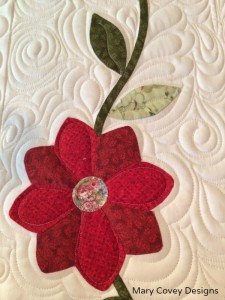
My process for deciding how to choose the perfect long arm quilting design for a quilt is very simple. Since I do free motion long arm quilting for customers, I always start by asking the customer a few basic questions. These questions should be considered even if you are quilting your own quilt.
- Does the quilt have any problems? Does it have uneven borders, open seams, fullness in the body, the quilt, or the borders, and is the quilt square?
- How will the quilt be used? Is it a show quilt or will a toddler play with it everyday? Will it be washed often or never at all?
- What type of design will the recipient of the quilt like? Some people love flowers and feathers and others prefer geometric designs. Because I have been free motion quilting for over thirty years, most of my customers let me choose a design that will work best for their quilt. I always try to quilt the quilt as if it were my own.
- A quilt with fullness in the body or borders will require a design that can work in this problem without trapping creases or tucks into the top. Certain designs like a reverse loop or an overall stipple work well for easing in fullness. The first quilt pictured below is an example of too much fullness in the body/border of the quilt. Trying to do a flat line design would only magnify the problem.
- I try to take inspiration from the fabrics in the quilt Hearts, vines, leaves, geometrics, straight lines, the list is as varied as there are types of fabric. The second quilt in the picture below was full of fabrics that had hearts on them. So, for the borders, I quilted my free motion hearts that were connected with a loop. In the body of the quilt, I repeated the free motion loop.
- I do not use pantographs when I quilt, but there are thousands out there for the choosing. I have written a whole series of books that have machine quilting pantograph designs taken from my free motion quilting. The heart in the picture below is one of those designs. It is called “Mary Jane’s Heart” and can be found in my “Follow the Line” book volume two.
- Using the right thread for your quilting is a major part of quilting the quilt. I believe that thread color should not be the first thing you see when you look at a quilt. Thread should be the secondary element that gives your quilt beauty and character. I use 100% cotton Aurifil thread for both my top and bobbin stitching.
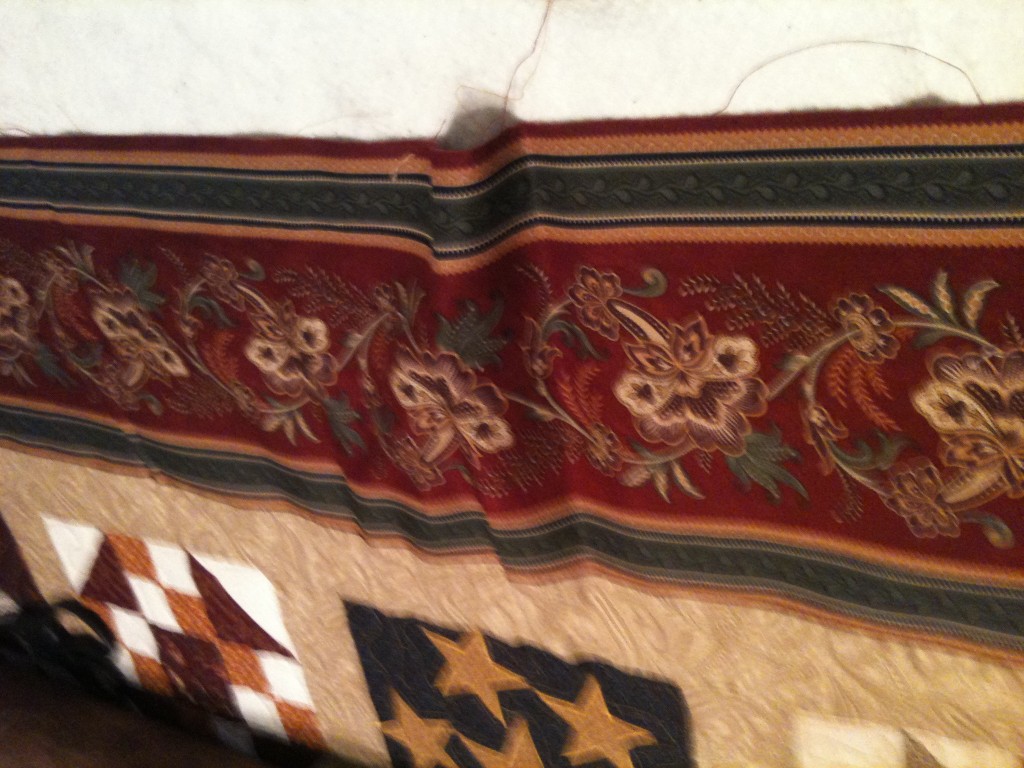
These are the ways I decide how to quilt a quilt. I would enjoy hearing all about your quilting experiences and how you choose your designs. Send me an email with your suggestions.
